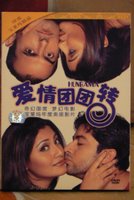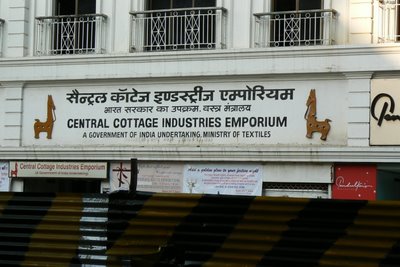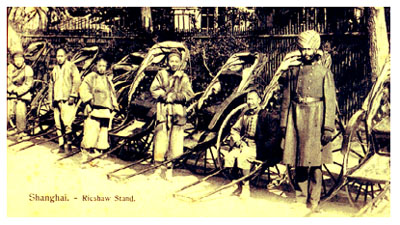 First of all, one of those small things about Shanghai that I still find immensely amusing is that if I ever mention India, in any possible context, the automatic reaction will be "Indian women are beautiful." It goes alongside other memes like "Tibet is very mysterious, I want to visit" or "I don't like Japanese people." From what I gather, it comes from the supernaturally beautiful and glamourous actresses of Bollywood movies - India's famously singular film industry, where movies are three hours long, encompass as many genres as possible, and incorporate lengthy and elaborate music videos.
First of all, one of those small things about Shanghai that I still find immensely amusing is that if I ever mention India, in any possible context, the automatic reaction will be "Indian women are beautiful." It goes alongside other memes like "Tibet is very mysterious, I want to visit" or "I don't like Japanese people." From what I gather, it comes from the supernaturally beautiful and glamourous actresses of Bollywood movies - India's famously singular film industry, where movies are three hours long, encompass as many genres as possible, and incorporate lengthy and elaborate music videos.  Indian movies aren't now popular in China, although the older generation still seems to have a sentimental attachment, and the soundtracks have a measure of popularity. In the 50s through 70s, though, Russian and Indian movies made up the bulk of the movies allowed to be imported into China. It's a little strange, as China and India were at war with each other. However India was positioned somewhere between the two sides of the Cold War, and economically and culturally shared much with Chinese Communism. For instance, the classic "Mother India" is a melodrama that's more fun than didactic, but with a firm Communist message of strong peasants being brow-beaten by their capitalist landlords. And even now, India has a very large number of businesses, small and large, that advertise themselves as being an economic concern of the central government:
Indian movies aren't now popular in China, although the older generation still seems to have a sentimental attachment, and the soundtracks have a measure of popularity. In the 50s through 70s, though, Russian and Indian movies made up the bulk of the movies allowed to be imported into China. It's a little strange, as China and India were at war with each other. However India was positioned somewhere between the two sides of the Cold War, and economically and culturally shared much with Chinese Communism. For instance, the classic "Mother India" is a melodrama that's more fun than didactic, but with a firm Communist message of strong peasants being brow-beaten by their capitalist landlords. And even now, India has a very large number of businesses, small and large, that advertise themselves as being an economic concern of the central government:
If you're curious to have a look at Bollywood movies, here's an iconic if slightly old-school video, taken from the film "Dil Se."
I am a very passionate fan of Bollywood movies, I'm a little starved for them out here. Even with the largest DVD bootleggers, who carry the most obscure French art films or blaxploitation flicks, you'll be lucky to find even a couple modern Bollywood movies. The older ones aren't so difficult to find, though, especially on VCD.
 Anyway, I admit dwelling on Bollywood comes off as a little trite, and I joked with Chinese people that that was the only thing I knew about India. They joked back that the only thing they knew was from "Journey to the West," probably the most famous literary work of China. It chronicles four Pilgrims (most famously, the Monkey King) who travel to India, all the way battling various monsters, to retrieve Buddhist texts.
Anyway, I admit dwelling on Bollywood comes off as a little trite, and I joked with Chinese people that that was the only thing I knew about India. They joked back that the only thing they knew was from "Journey to the West," probably the most famous literary work of China. It chronicles four Pilgrims (most famously, the Monkey King) who travel to India, all the way battling various monsters, to retrieve Buddhist texts. I've talked a little about Buddhism in China before, and I definitely will say more in the future. But as a quick look at an obvious difference between Chinese Buddhism and Western Christianity: even though Christianity comes from the Middle East, the Western European Jesus looks firmly Nordic, and various American Christian leaders claim America as a kind of chosen land. In Shanghai, on the other hand, Buddhism remains largely an exotic Indian religion, despite millenia of history, and being much more popular in China than in India. As a small example, this Jing'an Buddhist Temple is decorated with Indian elephants:

 A few more things: from what I understand, ten years ago there were no yoga studios in Shanghai. Now, they're relatively common, and extremely trendy with women. I've heard it's most popular with the expatriate community, but I know some Chinese people who practice. Some of these studios employ Indians as the main instructor. Just today, my apartment building recieved a mailbox drop of brochures for a Yoga studio, one of them is pictured on the right. As far as I know, I'm the only foreigner in the complex, and the brochure is almost entirely in Chinese, although the part I show offers both English and Chinese writing.
A few more things: from what I understand, ten years ago there were no yoga studios in Shanghai. Now, they're relatively common, and extremely trendy with women. I've heard it's most popular with the expatriate community, but I know some Chinese people who practice. Some of these studios employ Indians as the main instructor. Just today, my apartment building recieved a mailbox drop of brochures for a Yoga studio, one of them is pictured on the right. As far as I know, I'm the only foreigner in the complex, and the brochure is almost entirely in Chinese, although the part I show offers both English and Chinese writing.Furthermore, if you look at very old movies of Shanghai, they often show a few Sikhs, acting as low-level police officers. This is also true of older Hong Kong movies - both Shanghai and Hong Kong were touched by the British Empire. The difference is that Shanghai's Indian community dispersed alongside the British Empire leaving, while Hong Kong retains a large, segregated Indian presence. I try to keep this blog in the first person, but Tales of Old Shanghai has some interesting historical anecdotes.

And, from what I understand, Shanghai's Indian restaurants are actually very good. Honestly I haven't tried them, it wasn't much of a priority for me as I generally believe foreign restaurants in Shanghai to be average at best. However I definitely will make it a point to try a few places in the near future.
But I don't want to overstate the case. I don't think India dominates the imagination of most Chinese people. When I told people I was going, the average reaction was of a poorly-hidden confusion about why I would choose to go there.
And now for the inverse! I did see a surprisingly large amount of things Chinese in India. It certainly didn't compare to being in Honolulu or Oakland, but I did run across Chinese stores and neighborhoods, I did see Chinese religious signs being used as talismans (most often the Taoist yin-yang sign, which I rarely see in Shanghai), and I did see a huge amount of Chinese food - both aimed at tourists and not. Not only are Chinese restaurants and snack stalls common, it seems every Indian diner has a large selection of Chinese food. The cooks are Indian and the food is localized, of course, with some seeming like a small variation, and some being unrecognizably Indian. I wish I had taken photographs so I could describe the food in detail, but I didn't! I did take a snapshot of this funny store:

No comments:
Post a Comment